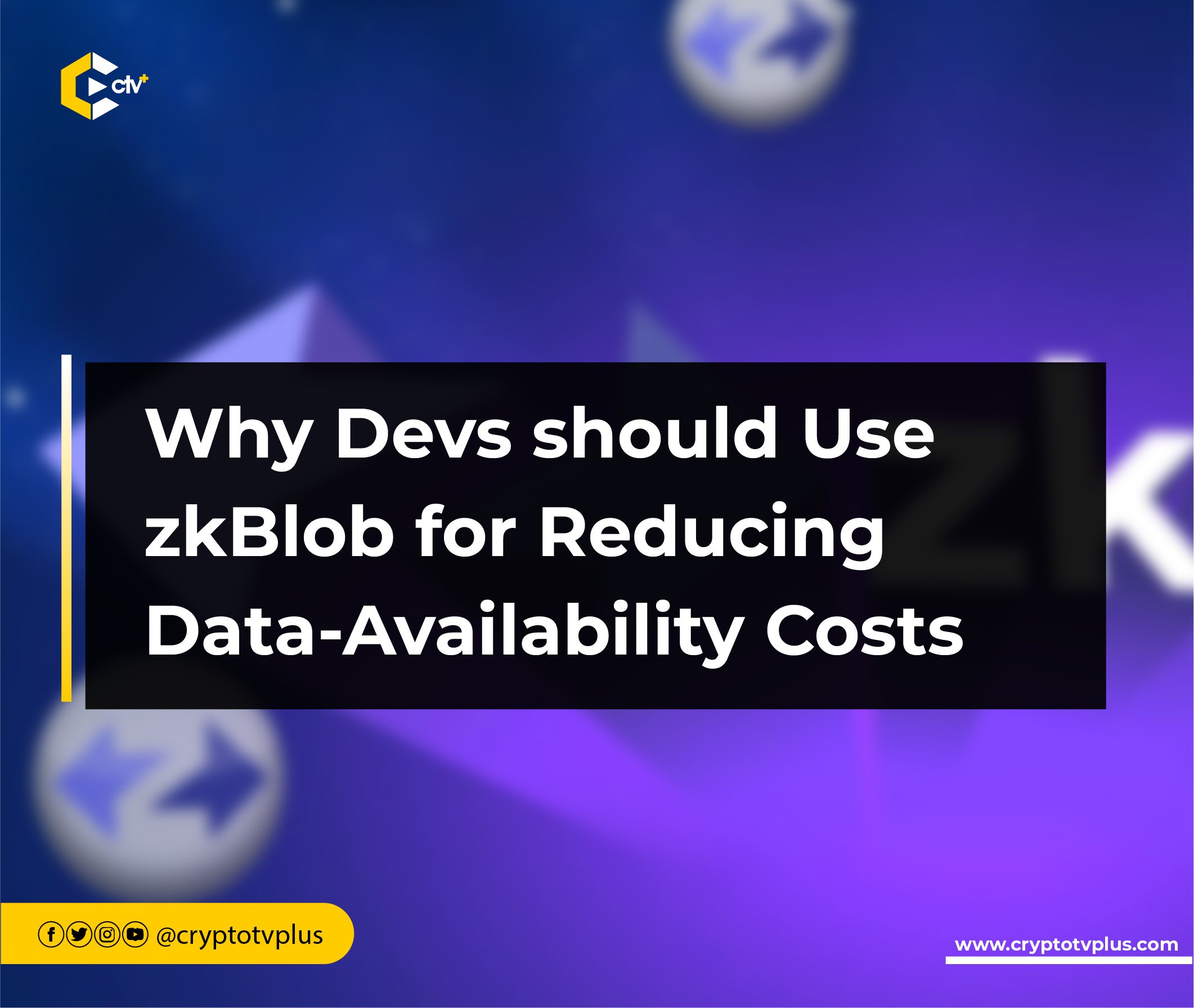FEATURED
Why Devs should Use zkBlob for Reducing Data-Availability Costs

Carlos Matallana, the Team Lead of the Protocol Integration Team of Polygon zkEVM, took the stage at EthCC Paris, to discuss a groundbreaking innovation in the world of blockchain data handling.
In his presentation, he unveiled the concept of zkBlob and its role in reducing data-availability costs on the zkEVM (Zero-Knowledge Ethereum Virtual Machine).
Carlos started the discussion by emphasizing the crucial role of data availability within blockchain networks, especially in solutions like zkEVM that operate at layer 2.
He made it clear that the substantial expenses tied to including data on the blockchain for layer 2 protocols present a notable challenge when considering the creation of Dapps.
Expanding on this, Carlos explained that a solution called zkBlob is in the works to tackle the issue. The main goal of zkBlob is to enhance the efficiency of data utilization within layer 2 protocols.
This innovative data structure, zkBlob, has been carefully crafted to optimize the availability of data within zkEVM.
The Team Lead then explained that zkBlob primarily focuses on compressing transaction data related to Ethereum. The key outcome of this compression is a significant reduction in the data’s overall size that needs to be incorporated onto the blockchain.
Carlos demonstrated how this approach can significantly reduce the associated costs, making transactions at the layer 2 level much more financially viable and realistic.
How zkBlob works
Further description of the composition of zkBlob shows that it uses Sparse Merkle Tree for data processing. The advantage of a sparse Merkle tree lies in its efficiency and storage optimization.
Sparse Merkle Tree is particularly useful in blockchain and cryptocurrency systems to represent the state of accounts, transactions, or other data.
Unlike traditional Merkle Tree where every leaf node needs to be filled, Sparse Merkle Tree only store non-empty leaf nodes and their ancestors, saving space.
This efficiency is especially valuable in scenarios where data updates are infrequent. When new data is added or updated, Sparse Merkle Tree minimizes the number of nodes that need to be modified, reducing computational and storage overhead.
This results in faster validation, reduced memory requirements, and overall improved performance in systems relying on Merkle tree structures.
Furthermore, he showcased visible instances of Ethereum transactions, contrasting their data sizes pre and post-zkBlob’s data compression integration.
He highlighted a significant 7.5x reduction for Ethereum transfers and an even more impressive 10x reduction for token swaps. “So instead of going to a few cents, you are going to 0.0064 dollars in the case of an ethereum transfer.”
He said that these gains were attributed to zkBlob’s innovations and the recent implementation of EIP-4844, which optimizes data availability. Carlos emphasized the direct benefits for users, including improved user experiences and cost efficiency.
By trimming data-availability expenses, transactions can become faster and more economical, particularly within the Ethereum ecosystem.
Read also; Solving Ethereum’s Scalability Challenge: The Linea ZKVM Approach
























